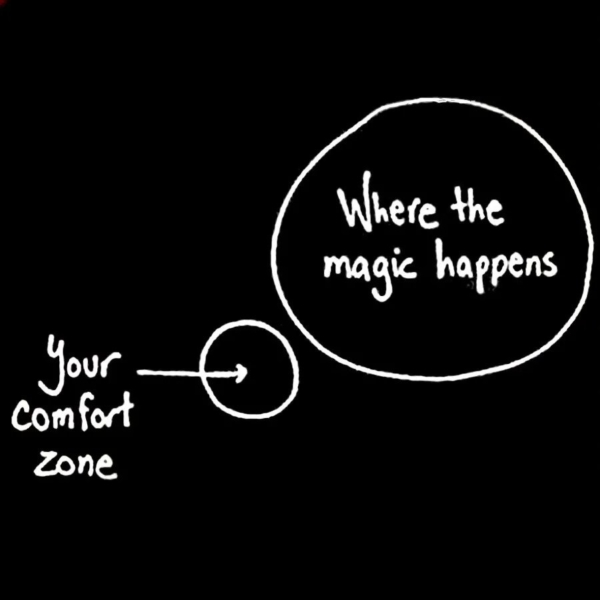/
“If you take that risk, if you take that chance, if you tell the truest, hardest, deepest story you have within you, you are not going to step into the light and find that you’re there alone, that you are going to be surrounded by people who are there with you, saying me too.”
-Cheryl Strayed
I am a huge Samantha Bee fan and have been ever since she was on The Daily Show. I watch her weekly show Full Frontal religiously and am so inspired by her feminist approach to political commentary and comedy. Plus, she’s just batshit funny. So as soon as I found out she was going to be appearing live in my town (Davis, CA) this past fall, I immediately purchased tickets. Her show was an interview-style performance, followed by Q&A from the audience. I happened to be sitting a couple of rows behind where the audience lined up for questions so when they made the announcement that they would be taking questions, my wife immediately nudged me and told me to get in line. I hesitated because I hadn’t been able to precisely articulate my question yet. She told me to get in line anyway. Instead of following her advice, I gave my question some thought until it was clear exactly what I wanted to ask and then got in line.
My question related to my son, who is 11 years old (and also a huge Samantha Bee fan). There was a lot about of discussion during her performance about sexual harassment and the #MeToo movement. I wanted to know what advice she would give to an 11-year old boy coming of age in this environment. We talk a lot about how should we talk to girls about this issue, but how should we be talking to boys (in an age-appropriate ways) about boundaries, consent, and power? I was genuinely interested in her perspective on this question (and also hopeful that she might give a shout out to my son, who begged us to come to the show). But I got 2 people away from the front of the line and they ended the show. I missed my chance because I waited too long to get in line.
My takeaway from that night is this: Sometimes we have to move forward in spite of uncertainty. If we don’t, we risk losing that windowing of opportunity. Or, as said by Mark Zuckerberg, “The biggest risk is not taking any risk.”
In many ways, the rise of the #MeToo movement has been the result of brave women who have taken risks to come forward with their stories, despite not knowing the outcome. These risks far outweigh the missed opportunity of asking my favorite comedian a question and have often included the possibility of losing jobs, damaging reputations, or even risks to physical safety. For thoughts on these complexities, you can read Louise Godbold’s piece here. Our history of not believing women on this issue runs strong and deep and many women, particularly those without power, continue not to be heard and/or are shamed when they shed light on misconduct. But the tide has started to shift. The list of public and private sector leaders who have been fired over sexual misconduct seems to be growing each day. Putting aside for a moment the important issue of how we deal with sexual harassers in a way that will meaningfully disrupt cycles of violence and abuse (for a perspective on that issue from Jane Steves of ACEs Connection, click here), it is a very a different conversation than it was a year ago. But we can’t forget that “The Silence Breakers” took a huge risk. They didn’t know they would be acknowledged as part of Time’s Person of the Year when they spoke up.
One of the common refrains in the trauma-informed and resilience-building movement is that there is no blueprint for this work. Yes, there are some common foundational principles and examples of initiatives and interventions that have worked. But this movement is still young and the path forward is not always linear or clearly defined. Many of the pioneers in this movement took big leaps of faith to help us reframe the way we think about the root causes of many issues ranging from clinical health outcomes to community violence to addiction. Taking this movement to the next level is going to continue to require risk-taking, both by individuals and their organizations. And there are going to be some failures along the way.
If we look at innovative companies in the private sector, the importance of risk-tolerance in a organizational culture is often talked about as a key to innovation. A quick google search will yield dozens of results on how innovative companies such as Amazon, Netflix, and Apple all try to encourage risk-taking.
In his 2017 Ted Talk entitled “The Unexpected Benefit of Celebrating Failure,” Astro Teller, the head of X (formerly Google X) talks about the importance of risk-taking and failure to X– a moonshot factory for “uncomfortably ambitious, world-changing ideas.” Examples of X projects include self-driving cars, wind turbines that sail through the air, and balloon-powered internet designed to extend connectivity to people in rural in remote areas worldwide. “Being audacious and working on big, risky things makes people inherently uncomfortable…We work hard at X to make it safe to fail.”
Allowing for failure doesn’t mean that we don’t need to think strategically or be smart about the risks we are taking. It just means that for innovation to occur, we need some ability to accept the fact that there will be mistakes along the way. Sometimes we can spend so much time thinking about the perfect solution that we get stuck in inaction. We let the perfect be the enemy of the good. I was reminded of that lesson the night I saw Samantha Bee. The Resilience Champion Certificate, launching in January 2018, is a 6-week online training program designed to help people get started in leading their organization or community on a journey toward resilience. It is designed to help people get unstuck and move from Aha! to Action.
As we all attempt to navigate the unchartered territories of building trauma-informed and resilient organizations, it can sometimes feel hard to move forward without this blueprint. Sometimes we are going to fail. But we can learn from our mistakes. We are all trying to change the world and as Steve Jobs said, “The people who are crazy enough to think they can change the world are the ones who do.”







Leave a Reply
Want to join the discussion?Feel free to contribute!